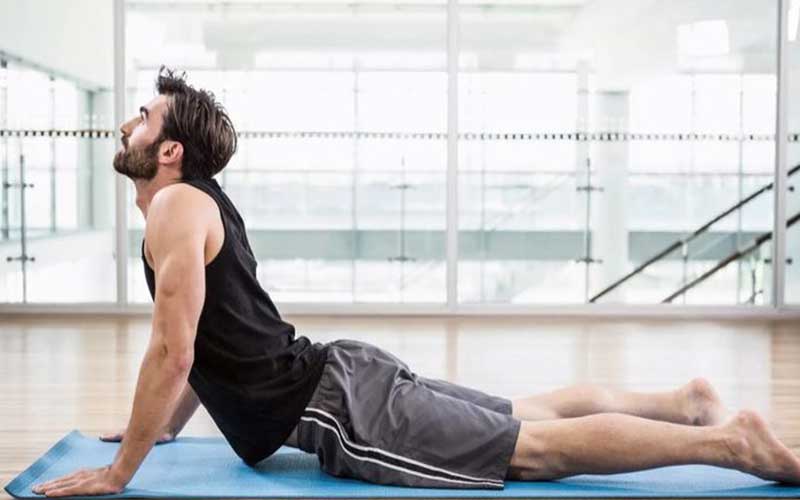How Exercise Helps Treat a Herniated Disc | The Role of Physical Activity in Lower Back Recovery

How Exercise Helps Treat a Herniated Disc | The Role of Physical Activity in Lower Back Recovery
Introduction
A herniated disc (commonly known as a slipped or bulging disc) is one of the most common causes of lower back pain. It can severely impact your daily life, limiting mobility and causing discomfort that radiates through the hips and legs. While some cases require medical or even surgical intervention, regular and proper exercise has emerged as a powerful, non-invasive tool for managing and improving herniated disc symptoms.
In this article, we’ll explore how exercise contributes to the treatment of herniated discs, the best types of workouts, and what to avoid to ensure a safe recovery.
What Is a Herniated Disc and What Causes It?
Spinal discs are soft, gel-like cushions between the vertebrae of the spine. Their main function is to absorb shock and support flexibility. A herniated disc occurs when the outer layer of the disc tears, allowing the inner gel to bulge or leak out. This can irritate nearby nerves and cause pain, numbness, or weakness in the back and legs.
Common causes of disc herniation include:
-
Poor posture while sitting or standing for long periods
-
Improper lifting of heavy objects
-
Aging and natural disc degeneration
-
Weak core muscles and lack of physical activity
Is Exercise Harmful or Helpful for Herniated Discs?
At first glance, it may seem that exercise would worsen the condition. However, the right kind of exercise can significantly improve a herniated disc by strengthening the muscles that support the spine, reducing pressure on the discs, and increasing flexibility.
It’s crucial to avoid high-impact or incorrect movements and always consult with a physiotherapist or spine specialist before starting an exercise routine.
Benefits of Exercise for Herniated Disc Treatment
1. Pain and Inflammation Relief
Targeted stretching and strengthening exercises increase blood flow, which helps reduce inflammation and alleviate pain.
2. Strengthening Core Muscles
A strong core provides better spinal support, reducing strain on the discs and improving posture.
3. Posture Correction
Exercises focusing on spinal alignment help you sit, stand, and move properly, reducing the risk of future injuries.
4. Mental Health Boost
Physical activity promotes the release of endorphins, which improve mood and reduce the stress often associated with chronic pain.
Best Exercises for a Herniated Disc
Here are some safe and effective exercises that support disc recovery. These movements should be performed slowly and carefully.
1. Glute Bridge
Lie on your back with knees bent and feet flat on the floor. Lift your hips off the ground, squeeze your glutes, hold for a few seconds, then lower. This strengthens your lower back and core.
2. Knee-to-Chest Stretch
Lie on your back, bend one knee, and gently pull it toward your chest. Hold for 15–30 seconds, then switch legs. Helps relieve tension in the lower back.
3. Cat-Cow Stretch
On hands and knees, alternate between arching your back upward and dipping it downward. This improves flexibility and reduces stiffness.
4. Superman Exercise
Lie face down, then lift your arms and legs off the floor at the same time. Hold for a few seconds. This works your deep back stabilizing muscles.
Exercises to Avoid with a Herniated Disc
Some movements can make your condition worse. Avoid these unless specifically approved by your doctor:
-
Traditional sit-ups or crunches
-
Running on hard surfaces
-
Repetitive jumping
-
Lifting heavy weights without proper technique
Tips for Safe Exercise with a Herniated Disc
-
Always warm up before starting your workout
-
Stop if you feel sharp or increasing pain
-
Use a yoga mat or supportive surface
-
Consistency is key – aim for short, daily sessions
-
Gradually increase intensity under professional guidance
Conclusion
Exercise is not only a safe and effective method to manage herniated disc symptoms, but also a long-term solution to strengthen the body and prevent future flare-ups. With the right approach and professional guidance, physical activity can be one of the most empowering tools for recovery and spinal health.
Frequently Asked Questions (FAQ)
Can everyone with a herniated disc exercise?
Yes, but the type and intensity of the exercise should be tailored by a healthcare professional based on your specific condition.
When will I start feeling better after exercising?
Most people begin to notice improvements within 2 to 6 weeks of consistent, gentle workouts.
Is yoga good for a herniated disc?
Certain yoga poses like child’s pose, cobra, or cat-cow are beneficial, but you should avoid deep forward bends and twisting poses.
